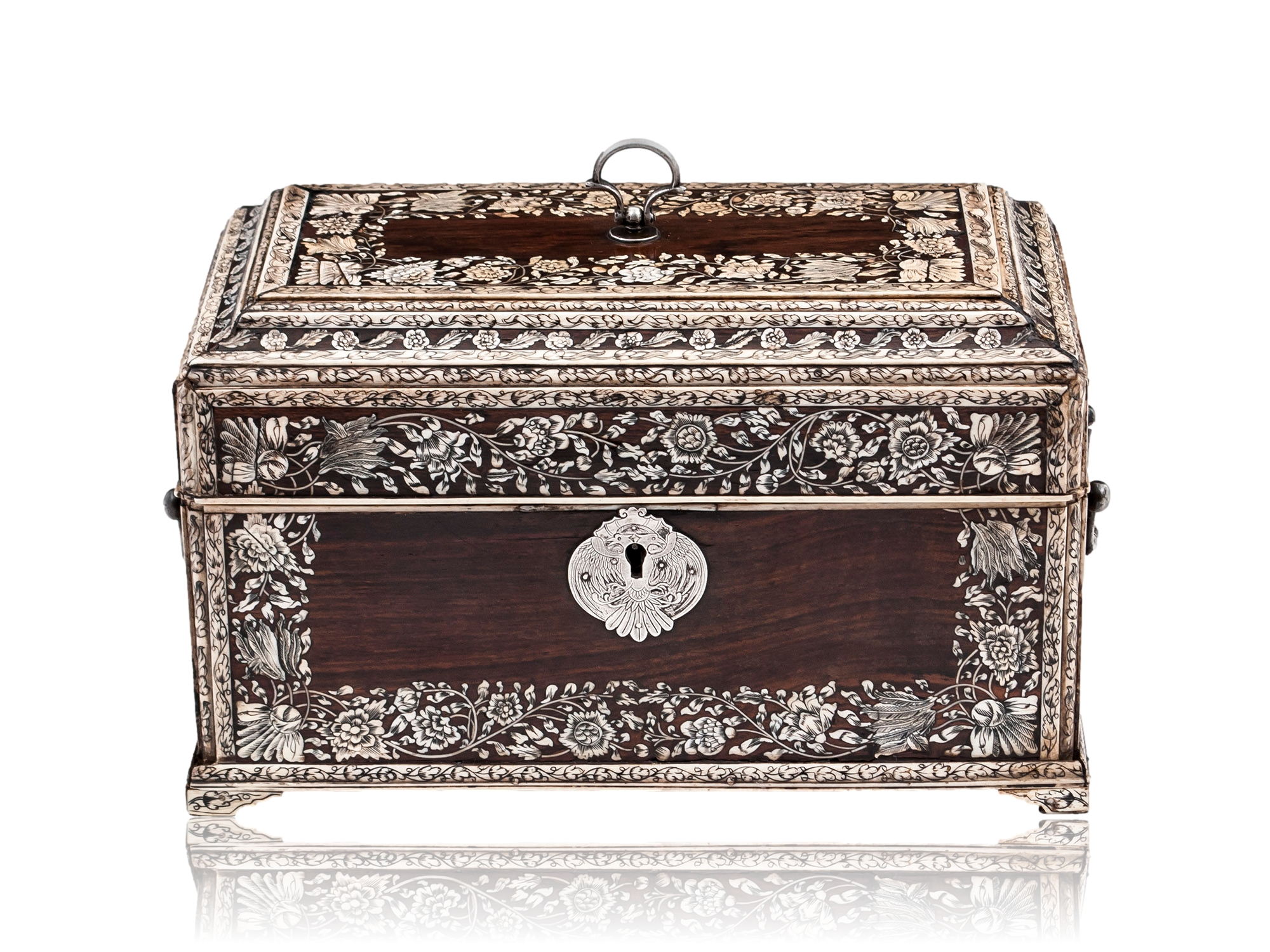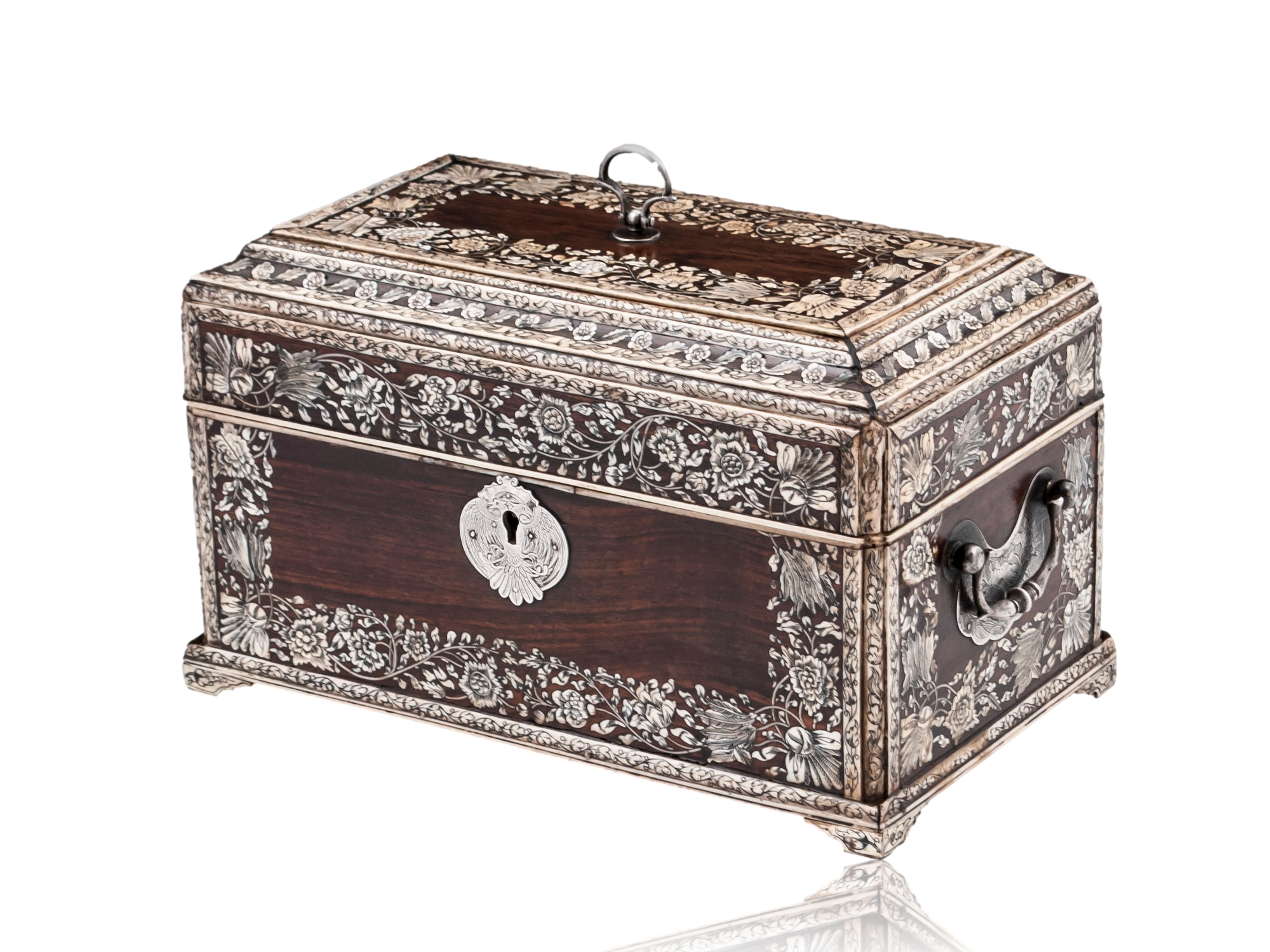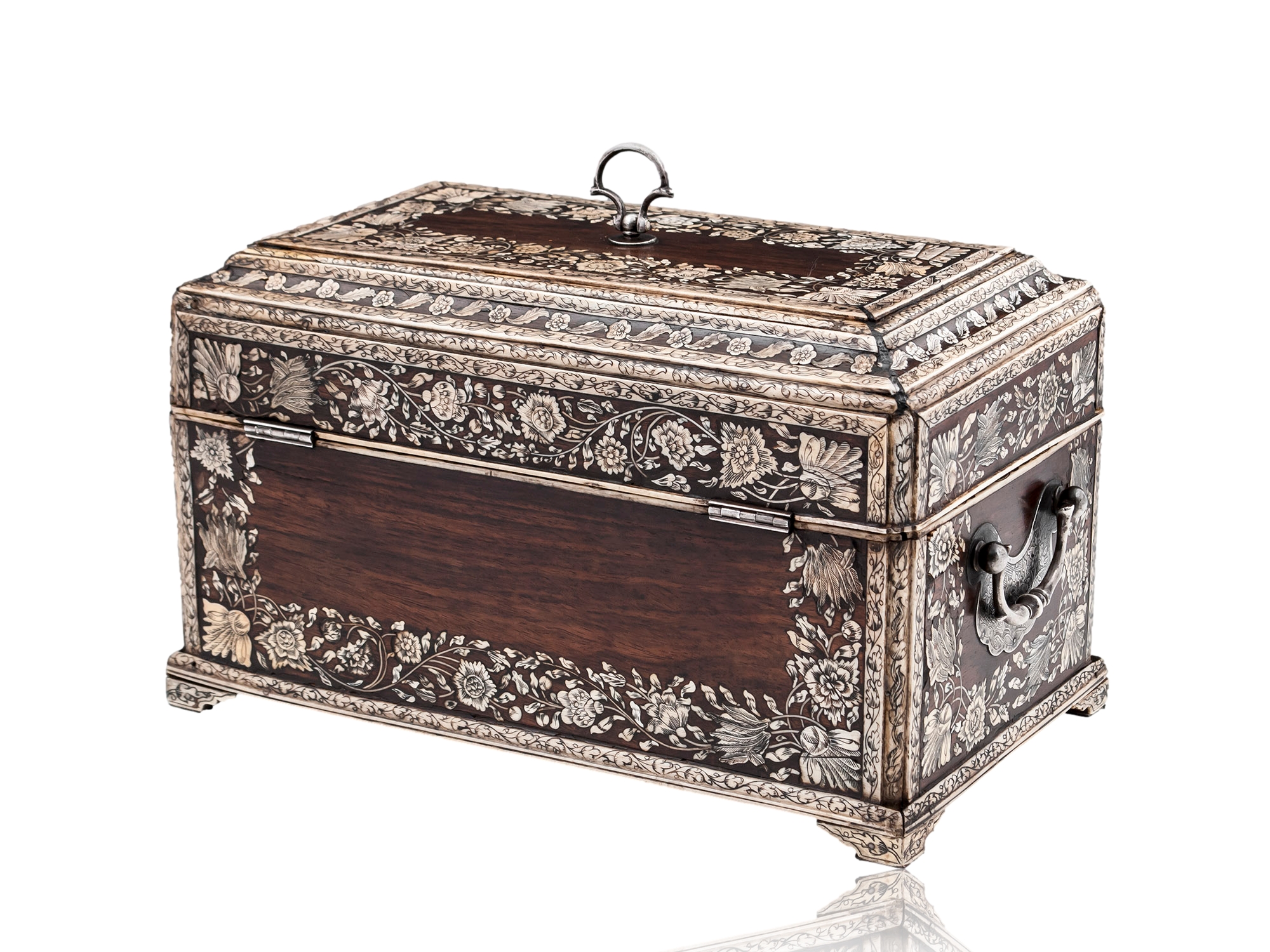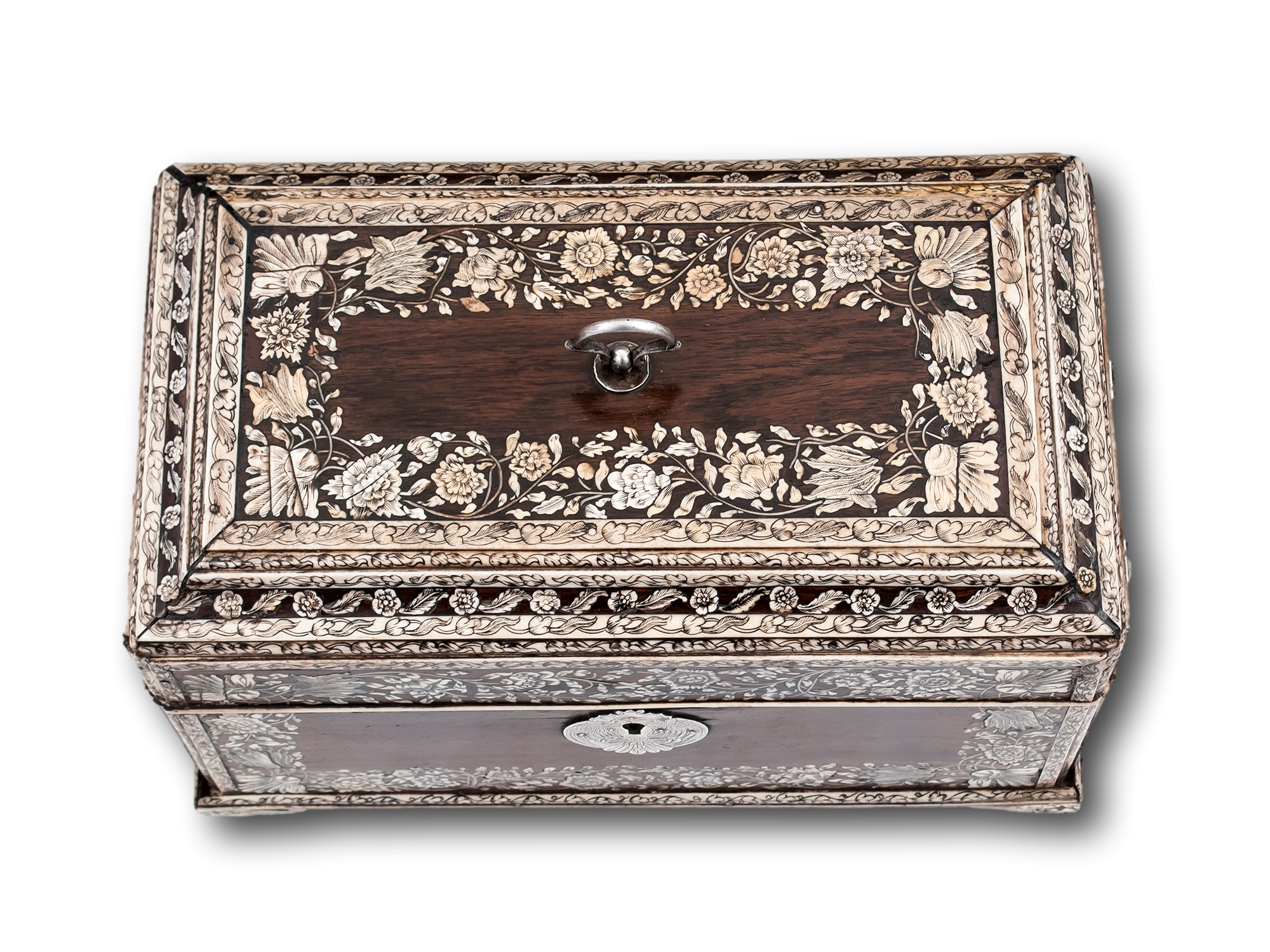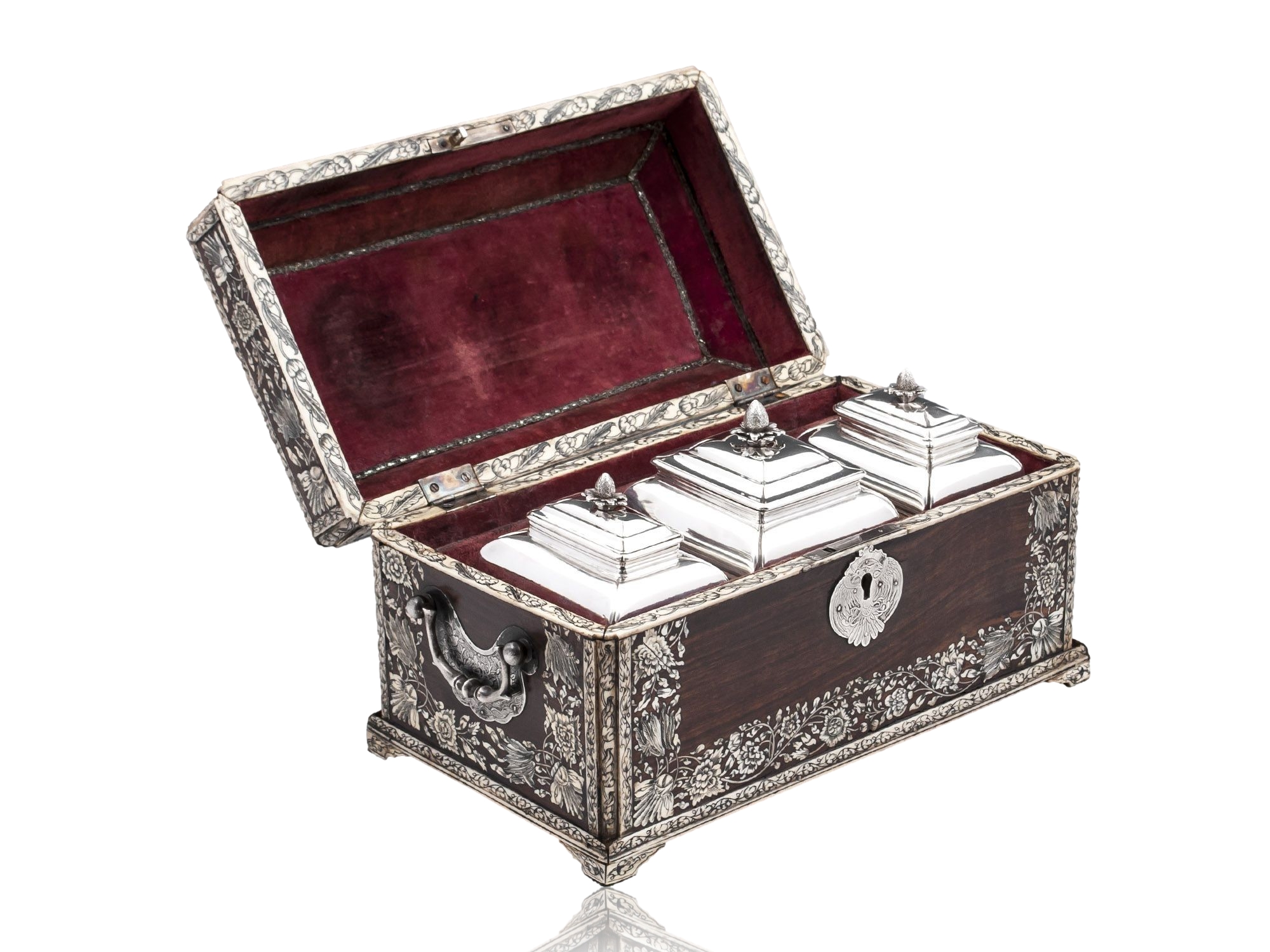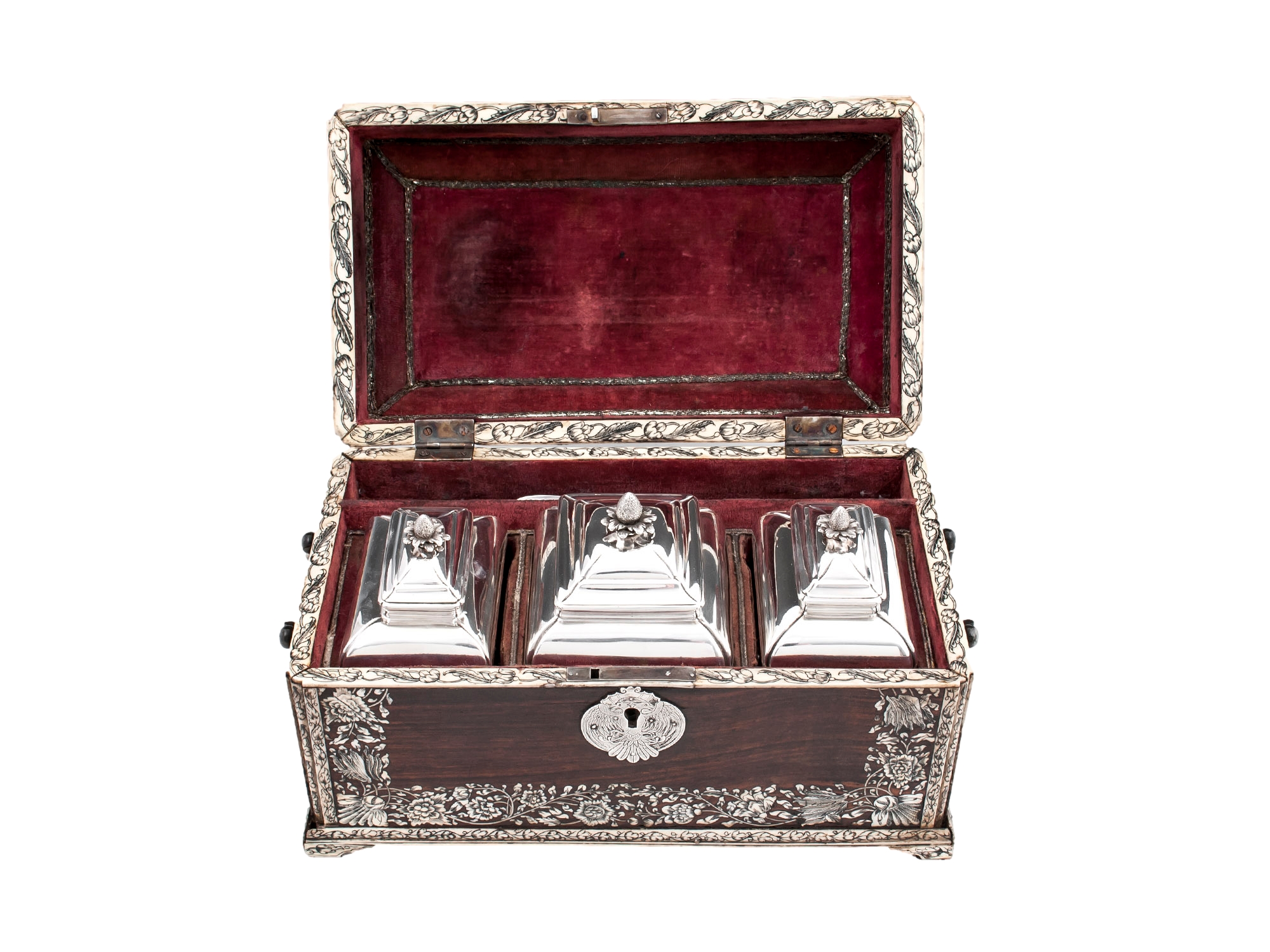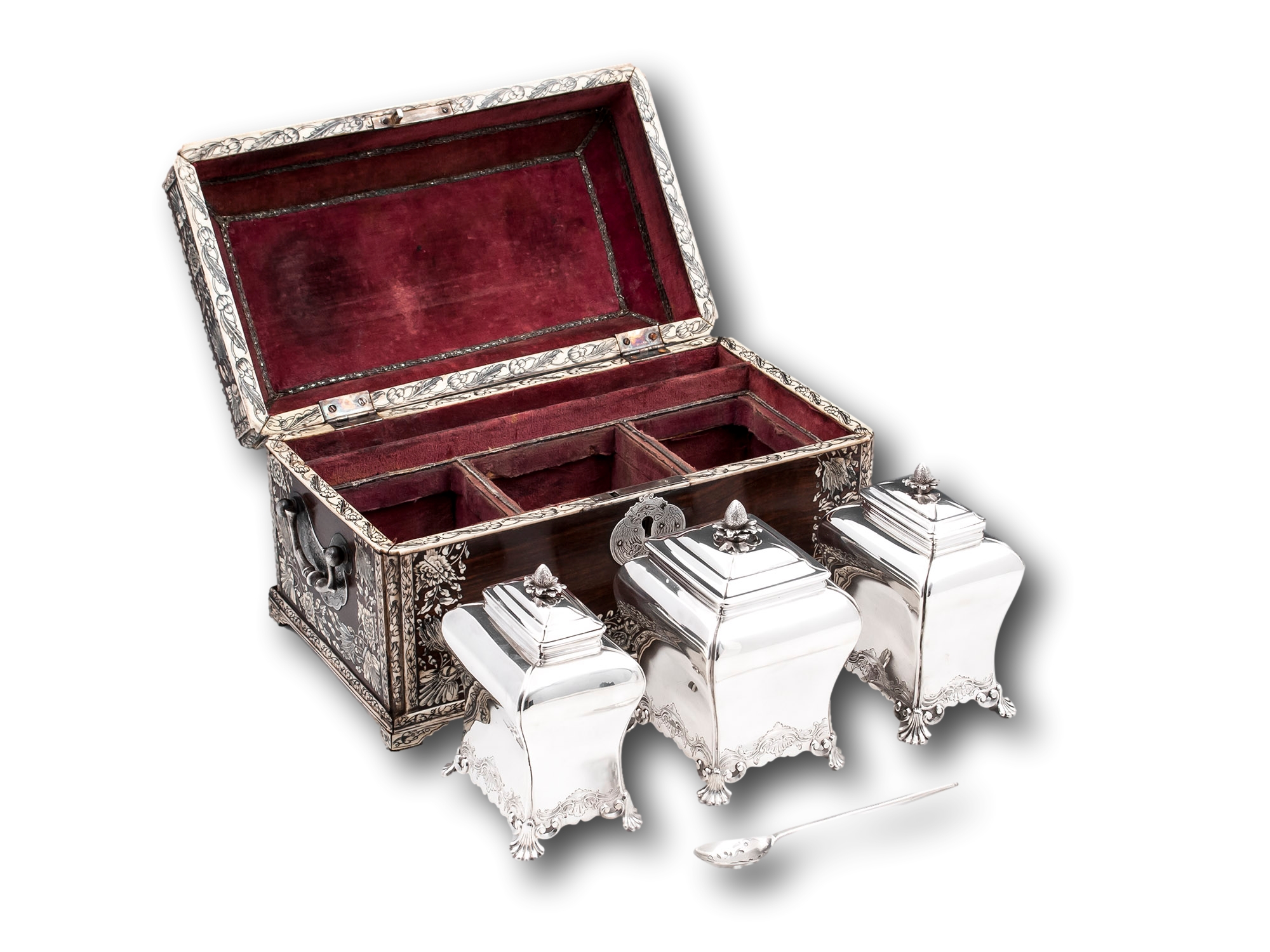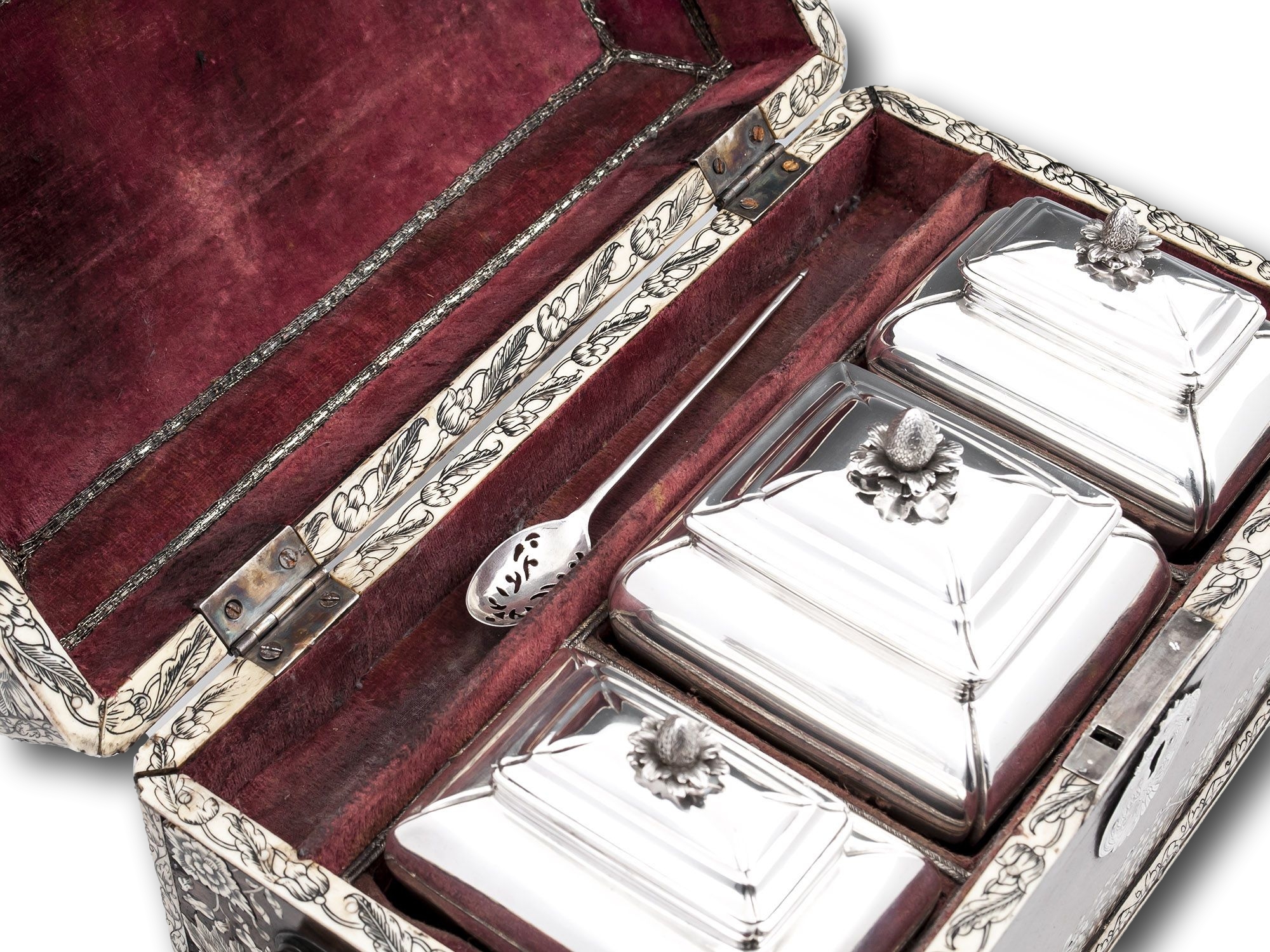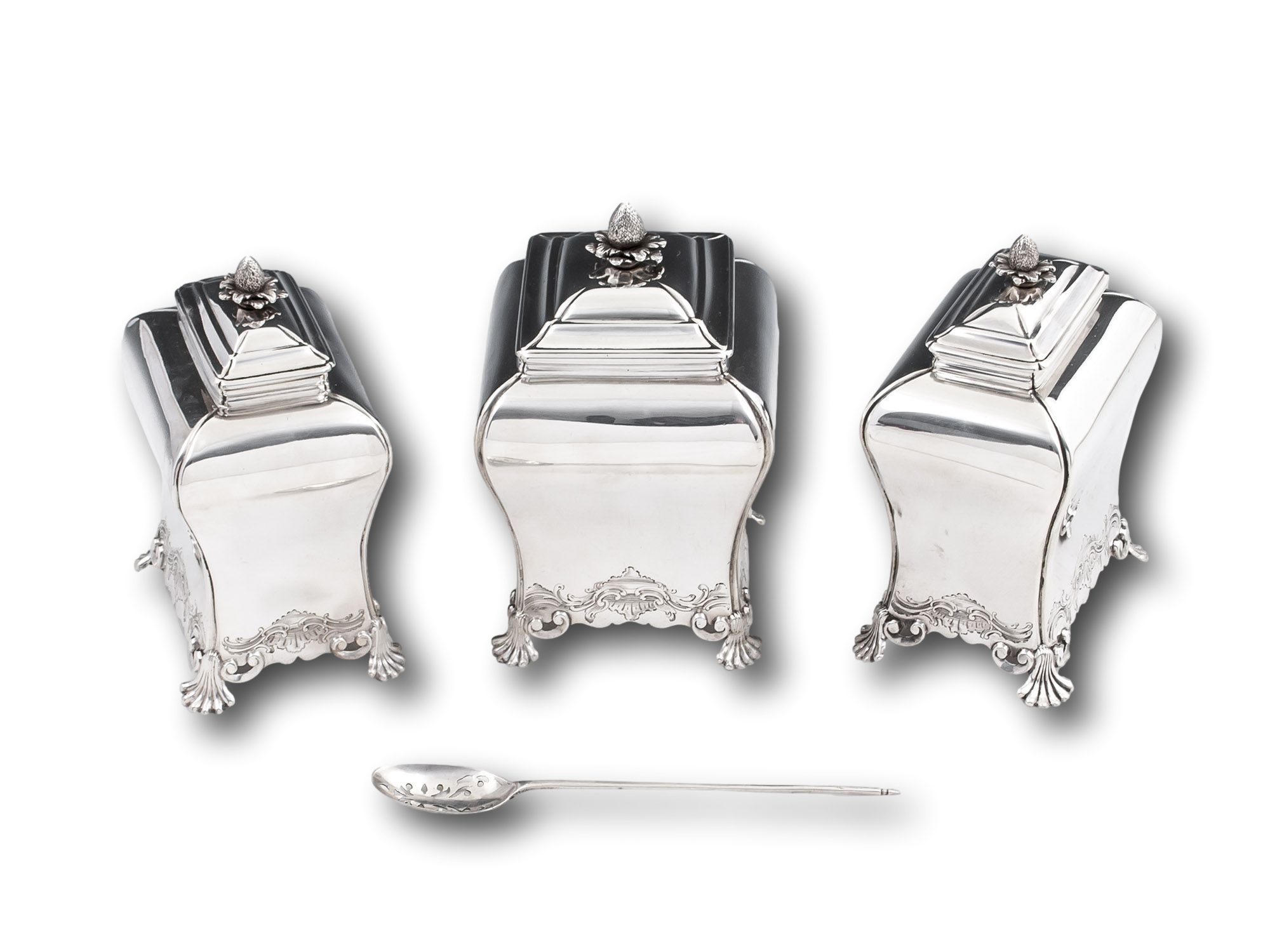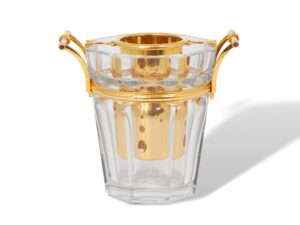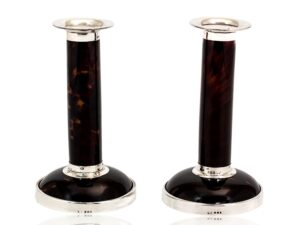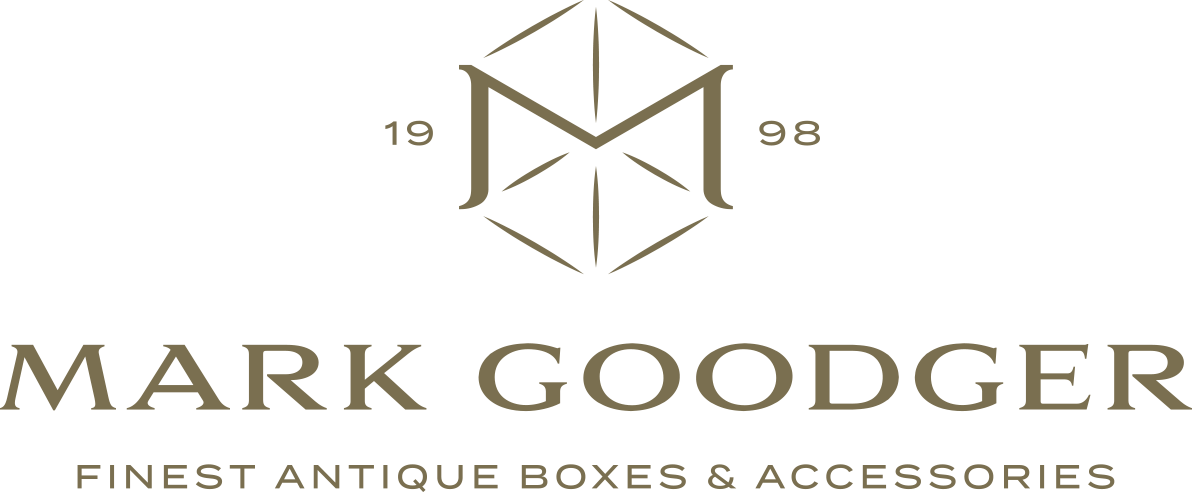Georgian Anglo Indian Vizagapatam Tea Chest Pierre Gillois
SOLD
Sterling Silver Tea Caddies From our Tea Caddy collection, we are thrilled to offer this rare Anglo Indian Vizagapatam Tea Chest. The Tea Chest of rectangular form raised upon on four carved and inlaid bracket feet with a stepped plinth... Read More
George II Silver Tea Caddies
| Dimensions | 28 × 17 × 17.5 cm |
|---|---|
| Country | |
| Period | |
| Year | |
| Medium | |
| Cites certification | 1C964T8L |
| SKU | 331564 |
Description
Description
Sterling Silver Tea Caddies
From our Tea Caddy collection, we are thrilled to offer this rare Anglo Indian Vizagapatam Tea Chest. The Tea Chest of rectangular form raised upon on four carved and inlaid bracket feet with a stepped plinth base and convex raised lid. The Tea Chest made from padouk wood extensively inlaid with bone and ivory decoration to the exterior featuring heavily carved gradient floral arrangements in various forms. The exterior is finished with twin mounted loop carry handles with further engraved flowers, a loop top handle and a Gandaberunda (double headed eagle). When opened the Tea Chest reveals the burgundy lining faced in ivory with further floral engraving. To the inside of the lid silver brading outlines the raised and borders the outer edge. The body features a triple partition and rear shelf for housing the mote spoon. The three partitions contain the period Sterling Silver Tea Caddies of bombe form with shallow domed lift off lids, waisted bodies and chased scroll decoration raised on curved shell feet surmounted with strawberry finials, each tea caddy is hallmarked by London Silversmith Pierre Gillois and dated 1754/1755/1756. The Tea Caddy dates to the Georgian period during the reign of George II circa 1756.
This Anglo Indian Tea Chest comes complete with a fully working lock & tasselled key.
Gandaberunda is a two-headed bird from Hindu mythology. The form is assumed by the Hindu deity Vishnu. It is believed to possess immense magical strength.
Anglo Indian refers to the term given to pieces made for the colonial British market. It usually encompasses British Aesthetics of subject with Indian influences such as inlay or material.
Vizagapatam The fashion for Bone & Ivory veneering began in Vizagapatam in the middle of the eighteenth century superseding inlay work as the predominant vogue. Tastes developed and the cabinet-making industry met a demand for decorative items in the neoclassical vogue with the stark contrast of black and white, as seen here. This fashion also influenced the style of engraving that decorated these pieces, which became increasingly restrained, “shedding exotic decorative elements in favour of motifs that were in fashion in Europe.
Pierre (Peter) Gillois was a Huguenot silversmith whose name appears in the records of Dublin goldsmiths in 1753-4, but details of a working career are recorded. His first hallmark was entered in London as a large worker in November 1754. He was registered to work at Wardour Street, St Anne, Soho where he appeared as a plateworker in the Parliament Report list 1773. The second mark entered on 15th June 1782 working from 25 Queen Street, Seven Dials. Gillois’ work appears from the few surviving examples to have been confined almost entirely to tea caddy and sugar box sets of a delicate rococo style.
Sterling Silver is an alloy composed by weight of 92.5% silver and 7.5% other metals, usually copper. The sterling silver standard has a minimum millesimal fineness (parts per thousand) of 925.
Mote Spoon, a multi-use spoon with a perforated bowl and spiked end often made from Silver. A Mote spoon’s primary use was to collect tea from a cup and act as a sieve leaving the water behind and collecting the loose leaf. The secondary use was to unblock the spout of a teapot with a sharp end. Moat spoons are relatively rare
Padouk (Pterocarpus) is in the family Fabaceae. Most species of Pterocarpus yield valuable timber traded as padauk (or padouk). The west African species may be traded as African rosewood and it also yields the most precious red sandalwood in China known as Zitan. The wood from the narra tree and the Burmese padauk tree is marketed as amboyna when it has grown in the burl form. Padauks are valued for their toughness, stability in use, and decorativeness, most having a reddish wood.
With every purchase from Mark Goodger Antiques, you will receive our latest catalogue, a Certificate of Authenticity, detailed care instructions for your chosen piece and an independent invoice (for insurance purposes) will be enclosed. As well as being protected by a no-hassle, money-back policy, your piece will be entirely insured during the shipping process to ensure the safety of your item.
Additional information
Additional information
| Dimensions | 28 × 17 × 17.5 cm |
|---|---|
| Country | |
| Period | |
| Year | |
| Medium | |
| Cites certification | 1C964T8L |
| SKU | 331564 |
